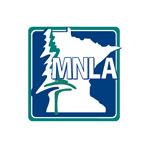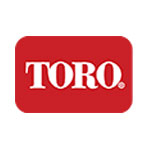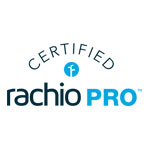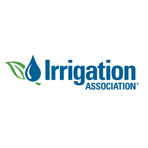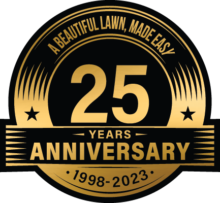Weed Control & Additional Services
Aqua Pro has the extra broadleaf weed control you are looking for.
Our Certified Technicians can diagnose your weed problem and use post emergent herbicides to control your annual, biennial, and perennial broadleaf weeds. Some weeds may need a repeated application 20-30 days later for complete control. We have found the most effective control for the broadleaf weed is in the spring or fall. Let us take care of your weed problems today.
Weeds detract from the beauty of lawns due to the contrast in color and texture between the desired grass plants and the weeds. In addition, weeds compete with the desired grass plants for available water and nutrients, usually resulting in thinning of desirable plant cover.
The most effective method of controlling lawn weeds is to maintain a dense and vigorously growing turf cover. A combination of proper care plus prudent use of chemicals is sometimes necessary to control weeds effectively in turf. Aqua Pro will analyze your weed problem and formulate a plan to provide a lawn you desire.
Additional Services
- The Importance of a Soil Test
 For optimal plant growth, soil must have the proper pH level. pH is measured on a scale of 1 to 14. A measurement of 7.0 is neutral. A number below 7 is acidic (sour) and above 7 is alkaline (sweet). Soil pH signifies a plant’s ability to draw nutrients from the soil.
For optimal plant growth, soil must have the proper pH level. pH is measured on a scale of 1 to 14. A measurement of 7.0 is neutral. A number below 7 is acidic (sour) and above 7 is alkaline (sweet). Soil pH signifies a plant’s ability to draw nutrients from the soil.
A soil test will enable you to determine whether your soil is neutral, alkaline or acidic so you can adjust the soil to the appropriate pH level. Most plants prefer nearly neutral soil with a pH between
6.2 and 7.2. To achieve this goal, acidic soil may require the application of lime. Alkaline soil may require some sulfur.
- The Importance of a Soil Test
- Core Aeration – Breathe life into your roots
Over time your soil naturally becomes compacted, leaving the subsoil undesirable for healthy lawn growth. Walking, playing, mowing and watering compact particles and reduce the air space necessary for root growth. Compaction is greatest in the upper 1 to 1 ½ inches of soil and needs to be relieved by mechanical aeration. This mechanical process plug 2-3 inch deep, finger size holes into the soil to improve the air, water, and nutrient exchange with your roots.
- Disease Control
Discolored and spotted grass leaves maybe a sign of disease. Diseases, such as snow mold and leaf sport are caused by fungi. The best way to prevent disease is to keep your lawn healthy with the proper mowing, watering and fertilizing. Applying a series of fungicide treatments may be needed if a problem persists.
- Mosquito Control
When it is time to enjoy your outdoor living space, you shouldn’t have to be at the mercy of annoying mosquitoes and insects. Aqua Pro mosquito control will effectively reduce mosquitoes, ticks, fleas and other biting insects from your yard. We also offer special event applications that provides a barrier ensuring the comfort of you and your guests during your outdoor event.
have to be at the mercy of annoying mosquitoes and insects. Aqua Pro mosquito control will effectively reduce mosquitoes, ticks, fleas and other biting insects from your yard. We also offer special event applications that provides a barrier ensuring the comfort of you and your guests during your outdoor event.
- Mole/Vole Control
Although they are rarely seen, moles are common in Minnesota. They make their presence known by the raised tunnels and mounds they leave behind in your lawn and gardens. Aqua Pro can help you control the moles in your yard. Eliminating moles is a two step process. First, we will treat the soil to remove their food source from your yard. Second, we will apply a repellent to keep them out of the area you want protected. Mole Scram Professional repellent works two ways. Using all natural ingredients, the repellent coats moles’ food- worms and grubs- with a bad taste. Other ingredients make mole tunnels and surrounding soil smell disagreeable to them. These changes to mole’s environment drive them out of the application zone.
- Emerald Ash Borer
Zylam Liquid Systemic Insecticide for trees and shrubs is a highly systemic third generation neonicotinoid containing dinotefuran. Zylam Liquid provides control of the Emeral Ash Borer (EAB) which causes severe injury and death to Ash trees. One application of Zylam liquid will provide rapid systemic activity, controlling EAB larvae and adults where they feed. A single application will provide extended systemic activity for year-long control. FOr optimum control of EAB, liquid Zylam should be applied in late spring, after trees have leafed out, but before EAB eggs have hatched. Egg hatch typically occurs from late May – mid June.
(EAB) which causes severe injury and death to Ash trees. One application of Zylam liquid will provide rapid systemic activity, controlling EAB larvae and adults where they feed. A single application will provide extended systemic activity for year-long control. FOr optimum control of EAB, liquid Zylam should be applied in late spring, after trees have leafed out, but before EAB eggs have hatched. Egg hatch typically occurs from late May – mid June.
- Over-Seeding
Over-seeding and a starter fertilizer is an excellent method for an established lawn. This method will provide you with a more dense lawn and fill in those thin areas.
- Goose Repellent –
Geese: Public nuisance number-one
With a Canada Goose population estimated at 6 million, and the possibility of that number doubling every five years – you need all the help you can get to rid your property of these ever-present birds. Damaging grass and other vegetation, polluting ponds and spreading disease, geese can actually endanger humans with aggressive, nasty behavior.
How it works…
The application of Goose Scram makes the food supply in the treated area very undesirable to geese, turkeys and ducks. The elimination of the food source will completely change the feeding habits of these birds and cause them to look for a more desirable feeding location.It is a all natural granular repellent that won’t harm animals or the environment. Repels geese for up to 25 days and continued re-application will train geese to find other areas to frequent, graze in and nest. This is an ecologically sound solution to a difficult problem! - Grub Control
Detecting the presence of an insect is the first step to good insect control. If a problem is detected your Aqua Pro professional will formulate a proper treatment. There’s a new way to control grubs and other turf-damaging pests while also minimizing the impact on the environment.( BEE SAFE! ) Acelepryn is an entirely new insecticide class with a novel mode of action providing up to 6 months of protection. Studies prove that it delivers superior results at the lowest application rate ever utilized for grub control.A single application offers superior control of cutworms, European chafer larvae, Japanese beetle larvae, annual bluegrass weevil, plus many more..
control grubs and other turf-damaging pests while also minimizing the impact on the environment.( BEE SAFE! ) Acelepryn is an entirely new insecticide class with a novel mode of action providing up to 6 months of protection. Studies prove that it delivers superior results at the lowest application rate ever utilized for grub control.A single application offers superior control of cutworms, European chafer larvae, Japanese beetle larvae, annual bluegrass weevil, plus many more..


